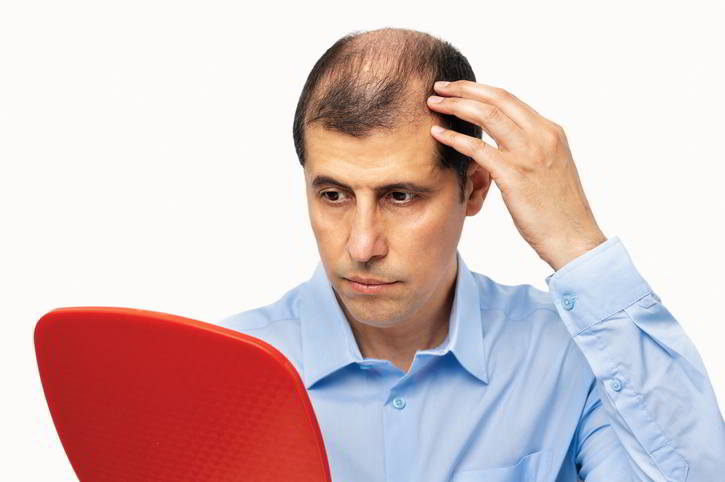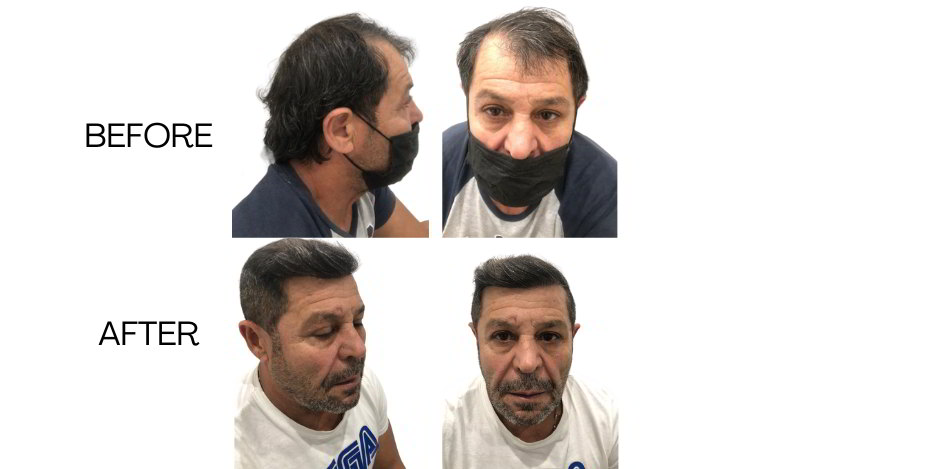Hair Transplant
Miss your full head of hair?
Can you feel your hair getting weaker?
Hair transplantation can significantly improve your appearance and self-confidence.

What is Hair Transplant?
Hair transplantation is a surgical technique that moves hair follicles from a part of the body called the ‘donor site’ to a bald or balding part of the body known as the ‘recipient site’. In this minimally invasive procedure, grafts containing hair follicles that are genetically resistant to balding, (like the back of the head) are transplanted to the bald scalp.
The Surgery involves removing hair one by one of hair-bearing scalp from the back of the head and using it to fill an area with thin or no hair. The procedure takes approximately four to eight hours. No overnight stay in hospital. Most hair transplants are performed under local anesthesia.
What does the treatment engage?
At an initial consultation, the surgeon analyzes the patient’s scalp, discusses their preferences and expectations, and advises on what reasonable results should be expected. For several days prior to surgery the patient will be requested to refrain from using any medicines which might result in intraoperative bleeding and resultant poor grafting. Post operative antibiotics are commonly prescribed to prevent wound or graft infections.
Transplant operations are performed on an outpatient basis, with mild sedation (optional) and injected local anesthesia
Where is hair extracted from for a hair transplant?
To perform a hair transplant, hair is extracted from areas where there is more hair density, from the sides of the head and the back area, located between the nape and the crown.
How long does the hair transplant last?
A well-done hair transplant lasts a lifetime. It is a definitive solution since the transplanted hair does not have the genetic information that causes hair loss. This is why it will continue to grow strong and healthy in the recipient area forever.
What results shall I expect?
Typically results almost double from the 6 month to 12 month period. Although grafts grow at varying rates in patients, the majority of our patients have fair growth at the 6 month period followed by maximum growth at the 12 month mark. Photos are usually compared during follow-ups and in most cases one can notice that results almost doubles through these mentioned periods.
What is the postoperative period following the hair transplant like?
What to expect after your Hair Transplant
- REDNESS: “This is normal post-surgery and due to the recipient site cutting and vascularization that takes place to accommodate the newly placed graft. It will dissipate and can range from approximately two weeks to five months to do so depending on skin tones and sensitivity the patient has and indeed areas treated. For specific information on how to treat please see your advisor
- NUMBNESS: This can be due to the severing of the small nerves during the procedure; this is nothing to be concerned about and temporary; in some cases may last a period of a couple of months as the nerve receptors repair themselves.
- INFECTION: Redness, swelling and slight tenderness are to be expected for the first few days after the procedure. If the redness, swelling or tenderness increase after the second day, make sure to contact the clinic.
- IMPORTANT: No highly chemical-based products such as hair dye, hair lacquer or sprays, etc. should be used on the head for the next month. No concealer should be applied to the grafted area for 3 months and washed off nightly when applied. It is advised to avoid using a shaver to trim the donor area for the first 6 months. You are allowed to cut the donor area with a scissors 1month post op. It is advised to use scissors cut for the recipient area only when there is thick growth.
A detailed pre and post operative sheet is given to each patient before carrying out the hair transplant. This will ensure the patient of what is expected from him and the process involved. This will maximise the effort to attain the best results possible.
What is the best age to get a hair transplant?
There is no recommended age; hair transplants can be performed on any patient aged 18 to 80. However, around the age of 40 is the ideal time for men; this is because alopecia has already stabilised.
Even so, it’s not possible to determine exactly what the best age for a hair transplant is. The conditions can vary significantly from person to person. To make the best decision, it’s always best to consult with a specialist to determine what type of alopecia you have and what the best solution is.
Is it painful? What type of anaesthesia is used in a hair transplant?
Hair transplantation is a painless procedure since it is performed under local anaesthesia and is minimally invasive.
When can I start exercising again after a hair transplant?
You should refrain from exercise such as running, cycling and weight lifting as well as other contact sports – football etc, for at least 5 days after the procedure. Such activities can result in bleeding, loss of grafts and increased swelling. Vigorous physical activity should be avoided for 2 weeks after surgery. It is fine to go for a walk , however it is very important to avoid the sun and profuse sweating.
Follow up visits
We encourage all patients to keep in contact with the clinic and notify us of any problems that are encountered. These problems or queries will be responded to by immediate messaging and consultation with the hair transplant team.
A follow up visit will be scheduled at 2 months to check up on the patient as well as track progress of the transplanted hair. At this time patients can consider PRP sessions once monthly for 2-3 months to improve the rate of hair growth.
Low level laser therapy, mesotherapy and microneedling sessions can also be offered post hair transplant. These treatments can further improve the rate at which transplanted hair grows as well as healing of any scars.
Please consult with the clinic as required and feel free to contact us. We are here to help!

